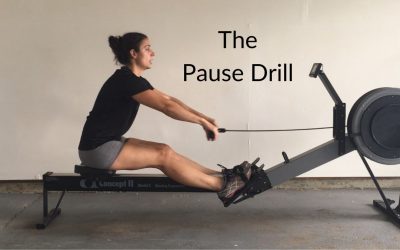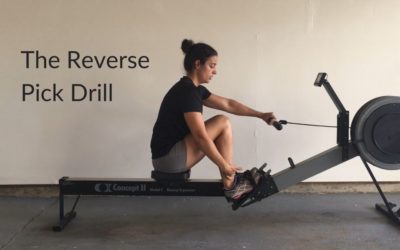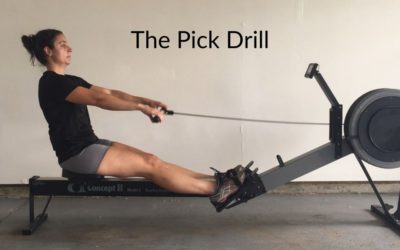The Best Way to Go Up and Down in Stroke Rate
When I talk about shifting stroke rates, either up or down, this is mostly done during the middle of a rowing piece. For example, you’re going from 22 strokes per minute (spm) to 24spm, to 26spm, then back down to 24spm. Maybe you’re going from 20spm to 26spm, etc. Whatever the stroke rate change is, it’s going up or going down within a couple of strokes.
Going UP in SPM
The number one mistake that I see when trying to increase spm is that people will try to do it all on the recovery. Let’s say you want to bump up to a 26spm from 20spm. When you do this on the recovery, you’ll pull yourself up to the front faster. You don’t know what stroke rate you’re going to see next. This happens when you try to hit that new spm on the next stroke by doing it on the recovery.
Making your recovery faster will hurt your ratio. You’ll be rushing up to the front and your drive will feel really heavy because all you’re doing is trying to get up to the front faster.
It’s better to build that stroke rate on the drive. That looks like pushing harder over a couple of strokes to bump up the rate. You might have to push for 110% for three to five strokes to inch that stroke rate up. If the stroke rate change is only two beats higher, you’ll probably get there a little bit easier. A good rule of thumb is to give yourself two strokes for every two spm beats to change the rate.
When you’re trying to build on the drive, think about getting that flywheel spinning with more pressure on the drive and then floating back up the recovery. Ideally, the recovery will naturally float up to become slightly quicker but ONLY because the drive is harder. They key here is to find the speed and power on the drive and keep the recovery relaxed.
Going DOWN in SPM
The opposite is true when you want to go down in stroke rate. When you want to go down in spm, you do that on the recovery. You’ll use the recovery to lengthen your stroke and slow it down. Then your goal is to keep that strong drive to maintain your power (which helps in keeping a nice split for you).
Reducing your stroke rate with the recovery can also help improve your ratio. When you’re going down in stroke rate, don’t let it turn into a paddle because it’s easy to do that. You’re going to want to keep the power. Reducing your spm is as simple as a little bit of lengthen on the recovery, keep the strong drive, little bit of lengthen, keep the strong drive, repeat!
One thing to keep in mind as the rate goes down is that you still want to manage the effort level that you’re putting into the drive. You can go down in rate and keep that drive just as strong as you did previously, but maybe you can’t hold that same split for the length of piece that you’re trying to do.
So, when you go down in rate that split may float up and get a little bit slower and that’s ok. Manage your intensity and how hard that drive is supposed to be with what the goal of your workout is.
I hope this post was helpful in teaching you how to go up and down in stroke rate. If you have any questions, feel free to shoot me an email at [email protected].
The Pause Drill
Another week, another drill. The pause drill is exactly what it sounds like. You pause in the middle of your stroke at certain places in order to achieve a specific technique fix. For example, if you bend your knees early on the recovery before the hands are extended...
The Reverse Pick Drill
“Isn’t it just the pick drill in reverse?” Not quite, but I can see why that can be confusing! The reverse pick drill is a useful tool to have in your rowing toolbox. It emphasizes correct body positioning, which is super important to have a strong and technically...
The Pick Drill
New to rowing? Need a technique overhaul? I highly suggest starting with the pick drill. The pick drill is useful in a lot of different ways. For beginners, it’s a great way to learn the stroke. You’re not worried about power, just correct movement. For more advanced...



